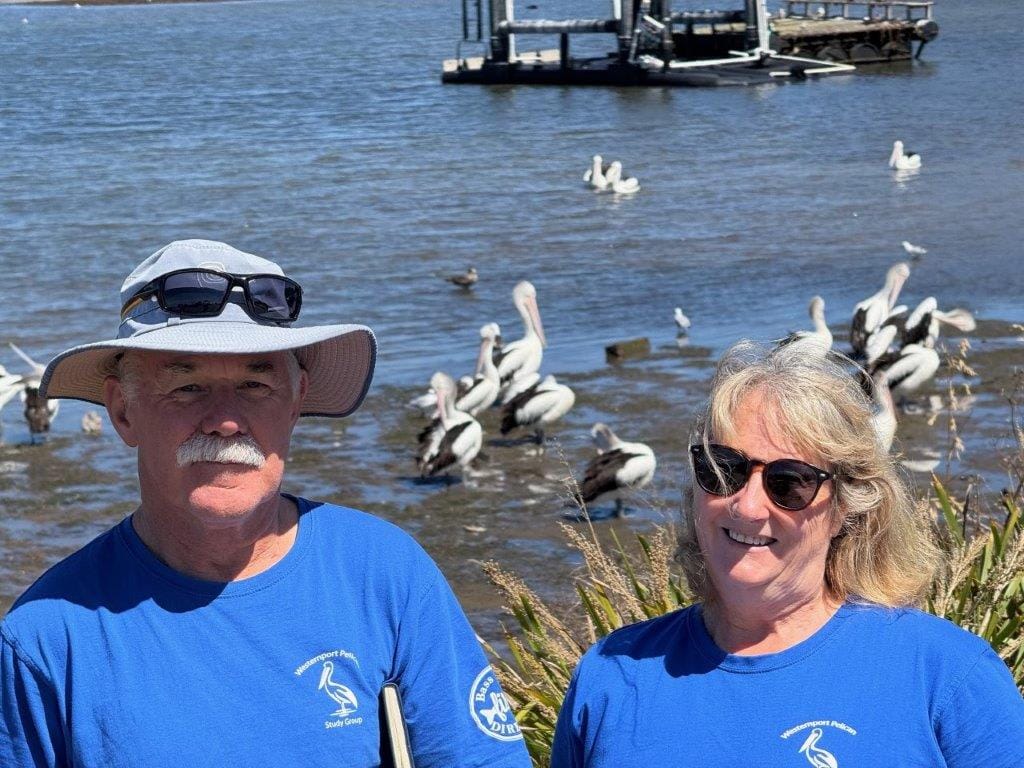The mysteries that surround these magnificent creatures
IT’S a strange thing to say, but even top ornithologists know just about nothing about one of the most common waterbirds in Australia – the majestic Australian Pelican or Pelecanus Conspicillatus. Members of the Westernport Pelican Study Group...

IT’S a strange thing to say, but even top ornithologists know just about nothing about one of the most common waterbirds in Australia – the majestic Australian Pelican or Pelecanus Conspicillatus.
Members of the Westernport Pelican Study Group, Gary and Joan Matthews, as good as confirmed this fact on Tuesday while studying the mystery bird, feeding at the Newhaven Boat Ramp.
They’re an opportunist feeder, we know that much!
Not only do they religiously turn-up at the San Remo Jetty at 12 noon daily, they’ll come from no where in droves every time a group of fishers arrive at the fish-cleaning station beside the boat ramp at Newhaven, waiting for a good feed of delicious fish guts!
And they’ll fly up to 300km a day during breeding season, gliding expertly across the updrafts with the best of the soaring eagles.
But according to Gary Matthews, while we suspect that individual pelicans will travel to feed on both saltwater and freshwater, some as far as the Lake Eyre basin during rare flooding events, we don’t know for sure, nor do we know where most of the breeding takes place.
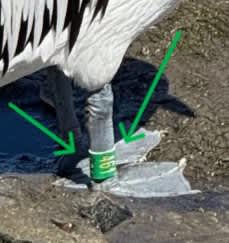
It seems that essentially all Australian pelicans derive from only two breeding sites, just one of which is permanent. This rookery is located on islands in the north of the Coorong, South Australia. They’ll also produce eggs in astounding numbers when Lake Eyre is full.
However, while they’ll establish nests elsewhere, it’s not at all clear how successful their breeding efforts are, which is why the work of citizen scientists, including members of the Westernport Pelican Study Group and their supporters, might ultimately prove vital.
“See those green bands around some of their legs? That means they’ve been tagged in the Western Port area,” said Joan Matthews.
“Red is for Lakes Entrance, blue for Balranald (southern NSW), black for Narran Lake near Lightning Ridge in northern NSW, and orange for Lake Brewster (east of Hillston in central NSW).
“That’s what we’re doing here today, checking on their movements.”
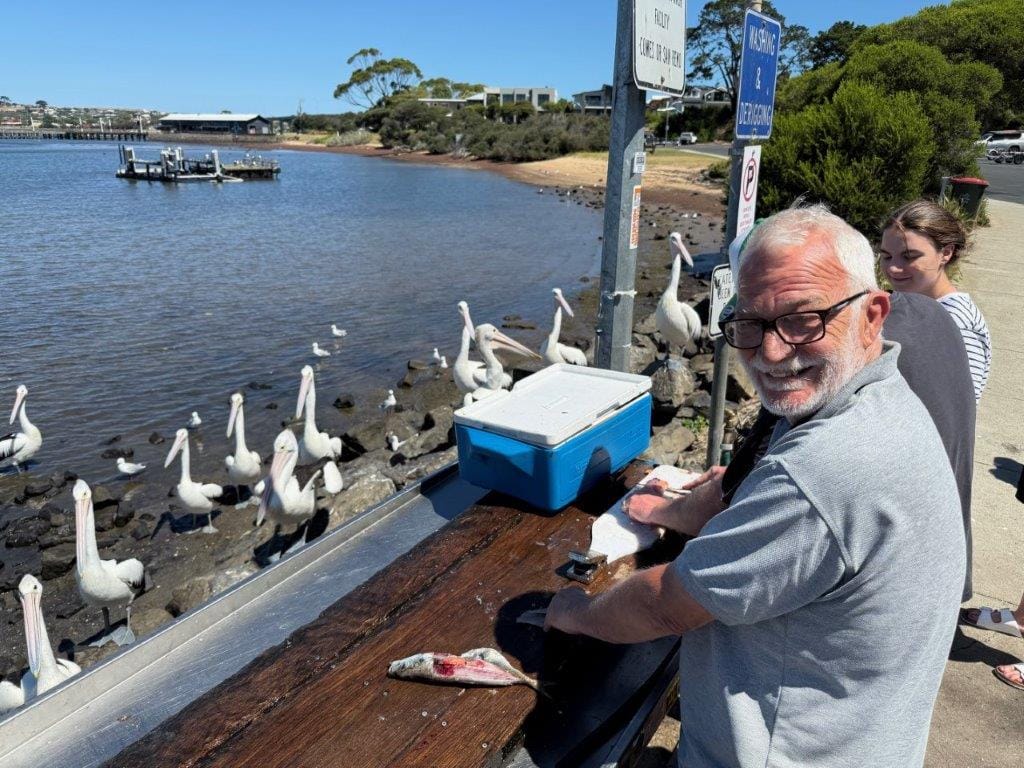
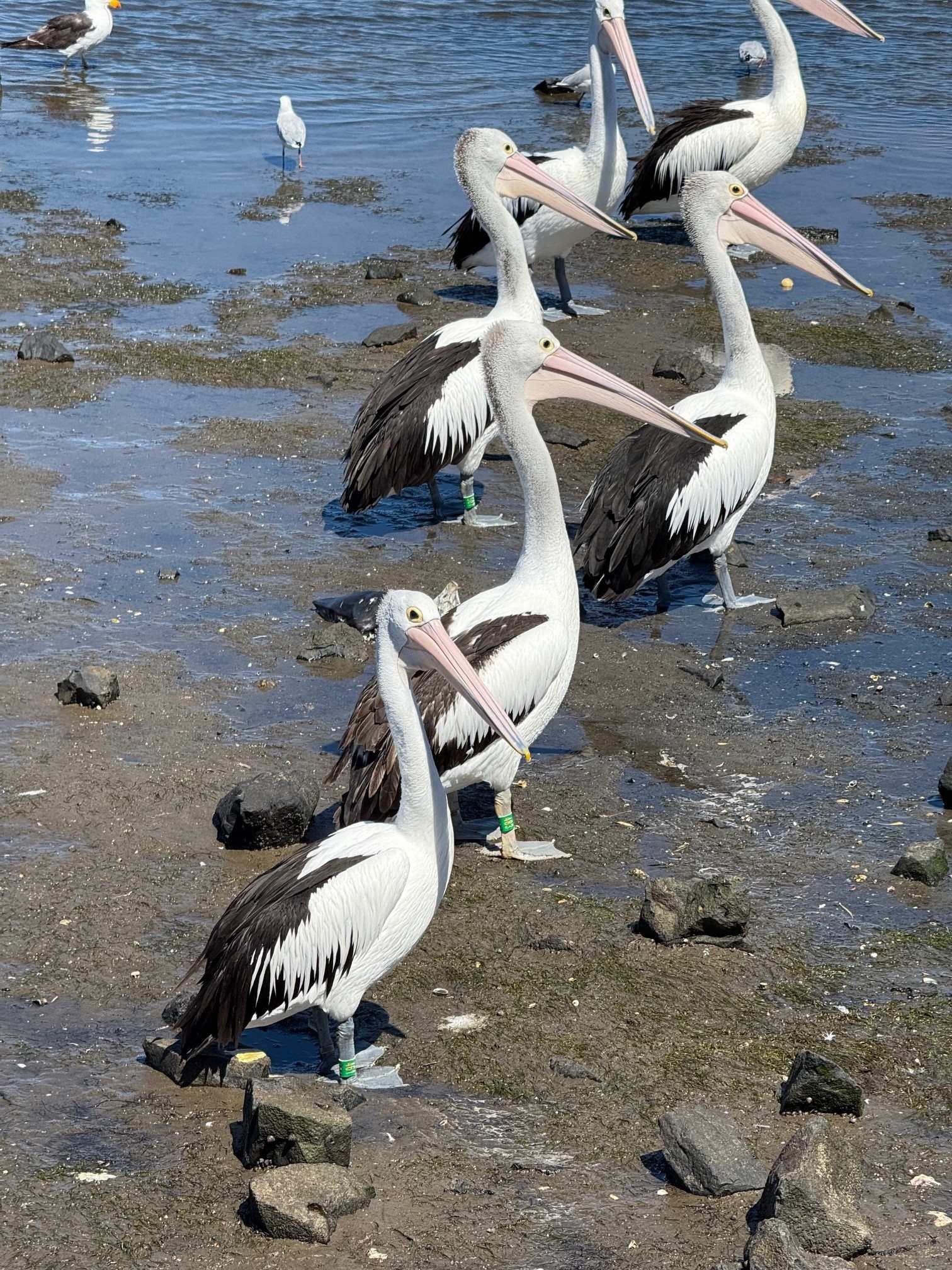
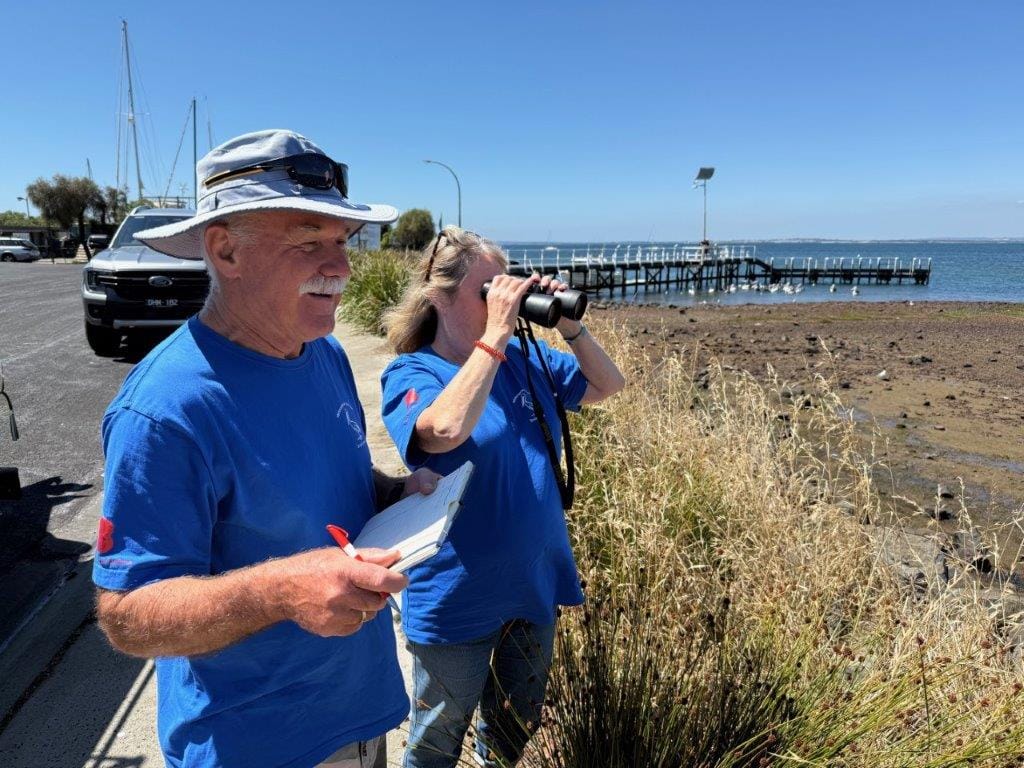
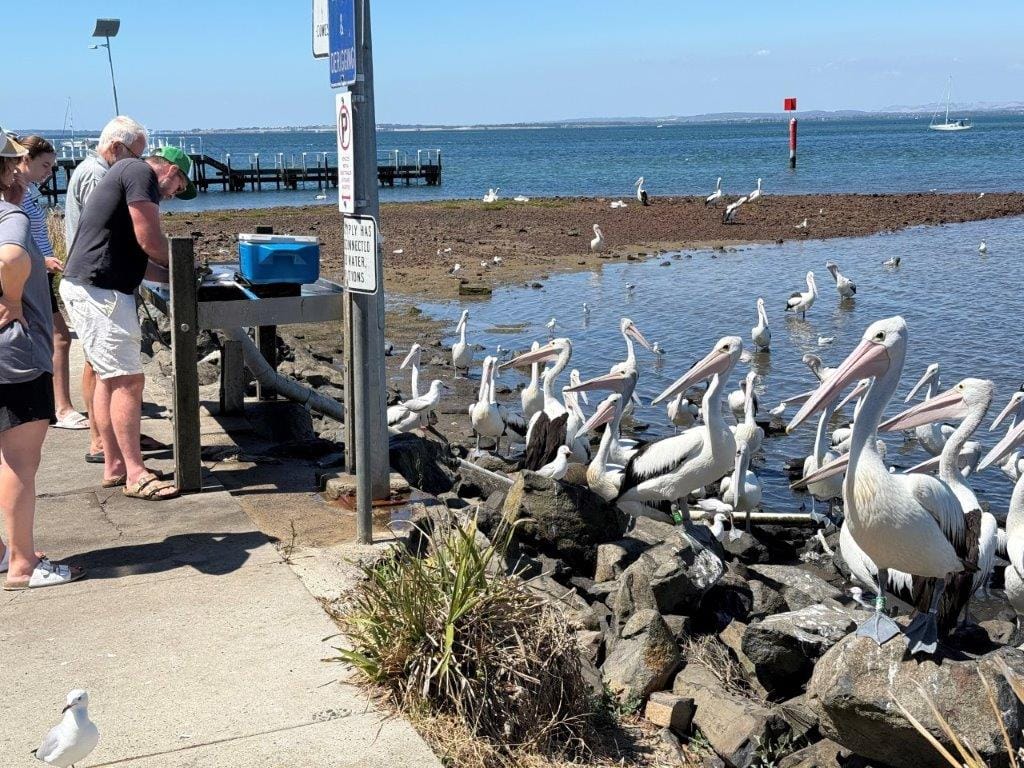
Together with staff from the Melbourne Zoo, they released a juvenile pelican at Fisher's Wetland near Churchill Island at Phillip Island on Tuesday morning and were checking to see if he’d made it as far as Newhaven.
“Originally, they picked him up from the Mornington Peninsula where he’d landed on a beach and showed no sign of moving. Visitors to the beach were interacting with him and the zoo was asked to come down and get him.
“He’s now been released here,” said Gary.
A check of the GPS tracking on the six-month-old pelican revealed he’d simply flown in a loop around Fisher’s Wetland.
Members of the group record their findings and feed it into database helping to unlock some of the mysteries of the pelican.
“They’ve been doing pelican counts up at Paynesville for a number of years, but we’d like to do one here in March and we’ll be calling for volunteers on our Facebook page,” said Gary.
You can find the Westernport Pelican Study Group’s Facebook page HERE
“We want to have volunteers counting at 20 sites around Western Port and would welcome assistance from the community,” he said.
And what do you like most about pelicans?
“The way they take off and land and this is the only place in the world you’ll see this pelican, it’s one of the biggest, the Australian Pelican, in fact it has the biggest bill of all pelicans, bigger even than the Great White Pelican.”
So, as much as we admire these amazing creatures, and their ability to get their 6kg body into the air with such grace, there’s still a lot more to know about the world around us.
